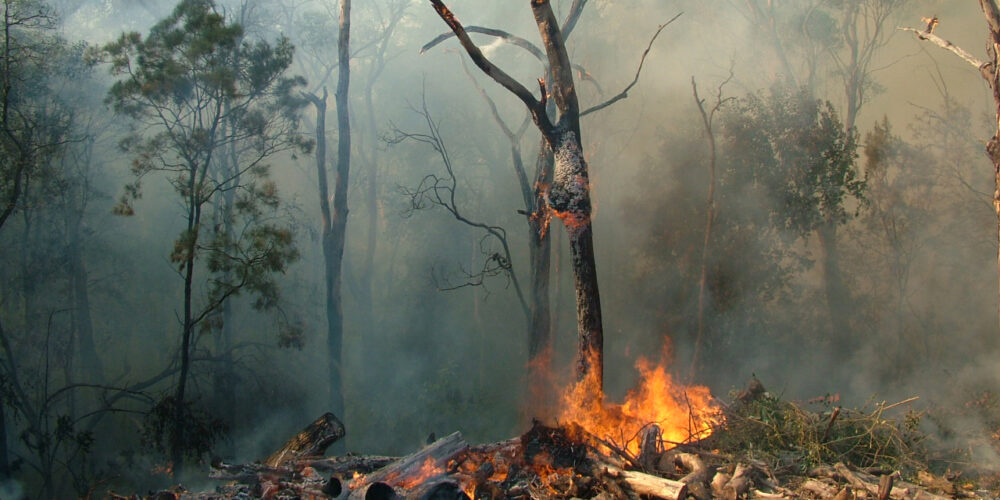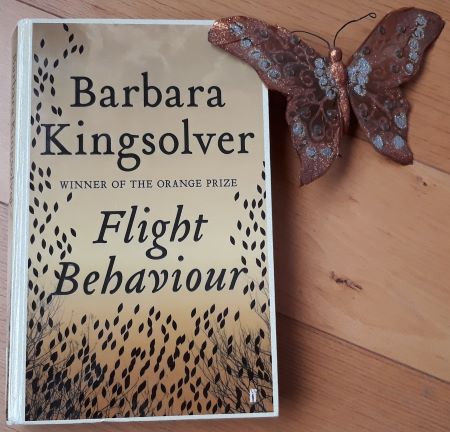
In a recent statement, UN Secretary-General Antonio Guterres said, “The era of global warming has ended; the era of global boiling has arrived.”
July 2023 was declared the hottest month in recorded history. This emphasises that climate change is real, and some gripping pieces of literature have been trying to propagate this message for a long time, reminding us of the urgency to address the issue of climate change.
In this blog, we’ll take a look at Brush with Bamboo’s ten fictional novel picks that you can read to know more about climate change and sustainability while keeping it entertaining at the same time.

The Water Knife by Paolo Bacigalupi
The Water Knife is a 2015 science fiction novel set in the American Southwest revolving around water shortage, drought, climate change, corporate greed, and social hierarchy. The book’s central characters include a spy, a hardened journalist, and a young Texas migrant who are the pawns in a corrupt game where everyone is battling for the control of dwindling water resources.
As the story progresses, water becomes more valuable than gold, and attaining water becomes more difficult and violent. Paolo Bacigalupi keeps the readers hooked till the end by carving an interesting plot while keeping the central theme of water shortage and climate change intact throughout the story.
The Water Knife is a must-read if you’re looking for something thrilling and mysterious that ends with a valuable message for the audience.

New York 2140 by Kim Stanley Robinson
Kim Stanley Robinson took a refreshing take on global warming and climate change with his book New York 2140, set in the future, or the year 2140, as the title suggests. In this book, Robinson pointed out the mistakes humanity made by not reacting on time to the problem of climate change.
The novel unfolds in eight parts, with each chapter being told from the perspective of the eight main characters, and each strand elaborates on a different plot type. All these characters live in the same building – the Met Life skyscraper on Madison Square – which was modelled on the Campanile in Venice, giving Madison Square the look of Piazza San Marco because Kim reimagines New York as the new Venice: half submerged in water.
This book gives you an insight into how sea levels rise due to the warming climate and how it falls upon us, as responsible citizens, to play our part in tackling the more significant issue of climate change.

The Sea and Summer by George Turner
Published in 1987, The Sea and Summer by George Turner was celebrated internationally, with many literary critics calling it the first and most extraordinary novel of what is now a literary subgenre; a book based on climate change issues.
Set in future Australia, this novel takes you on a ride to a world where the greenhouse effect has led to eternal summers and constantly rising water levels, hence the title. The inhabitants in the book are divided into two castes: The well-off 10% population, known as ‘Sweet’ and the wretched 90% of the people, known as ‘Swill’. The book follows the story of two ‘Sweet’ children who drop to the fringes of Swill territory when their father loses his job and commits suicide.
This award-winning book by George Turner will take you through the theme of climate change while exploring the themes of capitalism and social corruption, which are relevant even today.

Memory of Water by Emmi Itäranta
Memory of Water is Emmi Itäranta’s debut novel, an award-winning speculative fiction. It is set in a drought-ravaged dystopian world where people fall prey to the climate crisis. Written beautifully, the author captures readers’ attention by making them realise the importance of simple things.
The book follows the story of 17-year-old Noria, who is responsible for carrying a certain family secret. As the war spreads into Noria’s homeland, she discovers many more of those secrets and her loyalties are torn apart.
Emmi Itaranta’s book is now more relevant than ever, and it’ll surely resonate with all of us. To end this segment, here’s a beautiful quote from her: “Water doesn’t belong to us, but we belong to water: when it has passed through our fingers and pores and bodies, nothing separates us from the earth.”

The Windup Girl by Paolo Bacigalupi
Another masterpiece by Paolo Bacigalupi, The Windup Girl falls under unique genres ranging from science-fiction to cyberpunk and biopunk. Set in a dystopian future, the novel takes place in Thailand.
The word ‘natural’ has no meaning in the book; everything is genetically modified, from fruits and vegetables to people. The main character of the book is Emiko, the windup girl. The Windups, or the New People, are genetically engineered creatures grown in labs to obey their owners.
With an excellent plot, The Windup Girl covers the themes of climate change and ecology, neatly unfolding the ideas of race, ethnicity, and gender, acknowledging that the future will not be any less broken just because we’ve developed technologically.

Odds Against Tomorrow by Nathaniel Rich
This intelligent and exhaustively researched book by Nathaniel Rich is full of suspense and thrill, leaving readers with a crucial message.
The book’s central character, Mitchell Zukor, is an unparalleled disaster forecaster. After finishing college, Mitchell is hired by a consulting firm where he is responsible for calculating worst-case scenarios related to climate change disasters. Mitchell’s predictions come true as the story progresses, turning him into a media star. This book is about how Mitchell discovers that the future is not linear and how everyone sees a situation differently.
The book explores the emotional toll of living in a world on the brink of ecological catastrophe. If you want to read something that will keep you on the edge throughout, Odds Against Tomorrow is the perfect book.

American War by Omar El Akkad
Journalist Omar El Akkad’s debut novel “American War” is set in the United States in the near dystopian future. A powerful debut which asks the question – what might happen if America were to turn its most devastating policies and weapons upon itself?
The story is about Sarat Chestnut, born during the second civil war in the USA. Her father is killed in a suicide bombing, and she ends up in a refugee camp with her family. Violence and the situation makes a terrorist out of Sarat. She learns what the world was like before climate change altered the algorithms of everyday life.
Omar takes the audience on a haunting ride with his book, where Louisiana is half underwater because of the climate crisis and how war has shaped people into literal instruments.

Flight Behavior by Barbara Kingsolver
Declared the best book of the year by the Washington Post and USA Today, Flight Behaviour was Barbara Kingsolver’s seventh book. The story follows an exciting plot capturing a community’s reaction to an unexpected phenomenon.
In an unseen chain of events, thousands of monarch butterflies arrive in Appalachia as they seem to have forgotten their winter migration because of warming temperatures in northern climes. Dellarobia Turnbow, the story’s main character, discovers this and finds it to be a miracle. The story is set in motion when Dellarobia keeps this strange secret, turning her life upside down.

The Drowned World by J.G. Ballard
First published in 1962, JG Ballard’s reimagination of the world in the future, set in the year 2145, is a mesmerising read. A terrifying world in which global warming and solar radiation have melted the ice caps is the backdrop of the book.
The novel follows biologist Dr Robert Kerans and his scientists as they confront a surreal cityscape populated by reptiles and insects. The story talks about the instances where Kerans is looking for a solution to this catastrophe.
The Drowned World laments that no post-human paradise awaits us on the other side should climate change continue affecting everyone’s lives the way to is now. It weaves a perfect tapestry of our actions’ consequences on the climate.

The Ministry for the Future by Kim Stanley Robinson
Another “cli-fi” by Kim Stanley Robinson is set in the near future and follows a subsidiary body established under The Paris Agreement. As the title indicates, it is an imaginary Ministry for the Future whose mission is to advocate for the world’s future generations with their primary focus on climate change issues.
The plot mainly revolves around Mary Murphy, the head of the ministry and Frank May, an American aid worker traumatised by experiencing a deadly heat wave in India. Most chapters are dedicated to other characters’ accounts of future events and their ideas about climate and ecology.
Kim Stanley’s book includes elements of utopian fiction as it portrays people addressing a common problem. You can read this book to get different perspectives about a common issue we all face simultaneously, i.e., climate change.